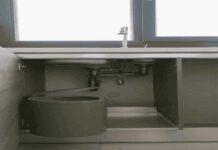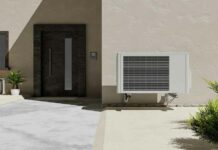A well-built roof is essential for a secure home, shielding your property from harsh weather and keeping the interior dry. Over time, even the sturdiest roofs can show wear, compromising their protective ability. Strengthening your roof not only extends its lifespan but also boosts its resilience to adverse weather, preventing costly damage. This guide will help you take proactive steps to reinforce your roof, ensuring it stands strong for years.
Start with a Thorough Inspection
The first step to strengthening any roof is conducting a thorough inspection. Whether you’re doing it yourself or hiring a professional, it’s critical to understand your roof’s current condition. Begin by checking for visible issues like missing or loose shingles, cracks, leaks, and signs of water damage. Don’t overlook the attic space either—inspect for signs of mold, mildew, or water stains. You should consider roof maintenance after damage is identified, as leaving these issues unaddressed can lead to more significant problems. Addressing these areas early will prevent further damage and lay the foundation for a stronger, more resilient roof.
Upgrade Your Roofing Materials
Not all roofing materials are created equal, and one of the best ways to strengthen your roof is by upgrading the materials it’s made from. Traditional asphalt shingles, while common, may not always offer the durability needed for extreme weather conditions. If you’re looking to fortify your roof, consider investing in more durable materials like metal roofing, architectural shingles, or slate tiles. These materials are longer-lasting and more resistant to harsh weather, making them ideal for homes in areas prone to storms or extreme heat. Materials like metal or clay offer enhanced fire resistance, which can be an added benefit depending on your location.
When upgrading, ensure the material fits your budget and local climate. Metal roofs are popular for their longevity, energy efficiency, and ability to withstand heavy winds and rain. Slate, though pricier, offers longevity and classic appeal. Choosing the right materials enhances roof resilience and reduces frequent repairs or replacements.
Improve Roof Ventilation
Ventilation plays a major role in the overall health of your roof. When roofs are improperly ventilated, moisture and heat can build up in the attic, which can lead to premature aging of your roof’s structure, mold growth, and even ice dams in colder climates. To avoid these problems, you need to ensure proper airflow through your attic and roofing system.
Adding ridge vents, soffit vents, or even powered attic fans can make a significant difference in regulating the temperature and moisture levels in your attic. A well-ventilated roof prevents heat buildup during the summer, which can make your home more energy efficient, while also reducing moisture accumulation that can lead to rot or mold. Proper ventilation strengthens the roof by protecting it from internal issues caused by excessive heat and humidity, extending its life in the process.
Reinforce Roof Flashing
Roof flashing serves as the protective barrier between your roof and areas that are prone to leaks, such as chimneys, skylights, and vent pipes. Over time, flashing can wear down or become dislodged, creating potential points of water entry. If water penetrates these areas, it can lead to leaks, rot, and even structural damage.
To reinforce your roof, inspect the flashing for signs of rust, warping, or detachment. If needed, replace old flashing with new, high-quality materials, or apply additional waterproof sealant to vulnerable spots. Strong, well-installed flashing will ensure water is directed away from critical areas, keeping your home dry even during heavy rains or snowstorms.

Strengthen the Roof Decking
The roof decking is the foundation of your roofing system and is crucial in supporting the weight of the materials above it. A weak or damaged decking can compromise the entire roof, making it more susceptible to leaks and collapse under the weight of heavy snow or wind.
Begin by checking the decking for any signs of rot, mold, or weakness. If you find damage, replace the affected sections with new plywood or composite decking material. To further strengthen the roof, consider adding a layer of sheathing to distribute weight more evenly and provide extra support. This reinforcement will give your roof the strength it needs to withstand the pressure of heavy roofing materials or severe weather conditions.
Install Hurricane Straps or Brackets
For homes located in hurricane-prone regions or areas that experience frequent high winds, installing hurricane straps or brackets is an effective way to secure your roof to the structure of your home. These metal connectors provide extra stability by anchoring the roof directly to the walls, reducing the risk of the roof being lifted off during extreme weather events.
While hurricane straps are most commonly used in coastal areas, they can also be a valuable addition in locations that experience strong winds or tornadoes. By reinforcing the connection between the roof and the walls of the house, you add an extra layer of protection against severe storms. Even in more temperate regions, these straps offer peace of mind by providing additional security to your home’s overall structure.
Regular Maintenance is Key
Even the strongest roofs need regular maintenance to stay in top condition. Simple tasks like cleaning gutters, inspecting shingles, and checking for leaks can prevent small issues from becoming major problems. Schedule annual roof inspections, particularly after major storms, to ensure everything is in good shape.
Pay special attention to areas where debris tends to accumulate, such as valleys or around chimneys, as these are common spots for water damage to develop. Keeping your roof clean and promptly addressing any minor damage will preserve its strength and prevent unnecessary wear. Regular maintenance ensures that all the reinforcements you’ve made continue to perform their function, giving your roof a longer lifespan and helping you avoid costly emergency repairs.
Strengthening your roof is a smart investment that will pay off in the form of improved durability, enhanced weather resistance, and long-term savings. From upgrading materials to reinforcing critical components like flashing and decking, each step you take ensures your roof is prepared to face the elements. By incorporating regular maintenance into your routine, you’ll further extend the life of your roof, keeping your home safe and secure. Whether you’re dealing with unpredictable weather or just want to avoid future repairs, following these expert tips will help you reinforce your roof like a pro.





























